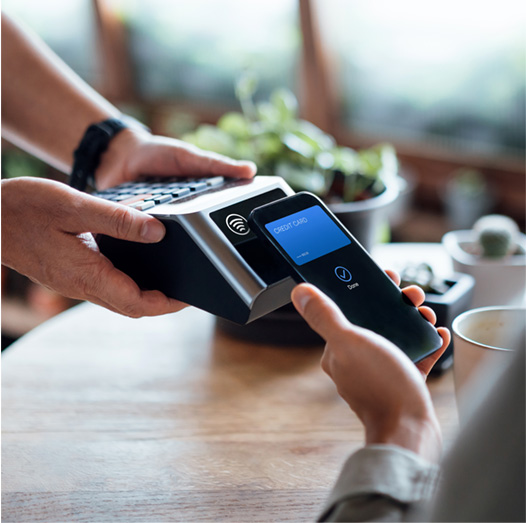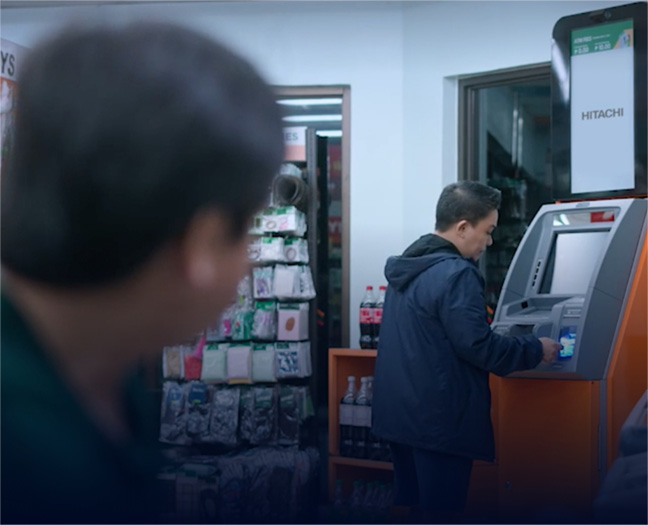The banking and payment system in the Philippines has been facing numerous challenges and barriers for years. Despite the country's rapidly growing economy, the share of adults with bank accounts in the Philippines remains below 35%.(i) Among many reasons, this includes the inaccessibility of opening a bank account as Filipinos face a shortage of funds or lack the necessary documentation required.

of Filipinos still chose cash(ii) as their preferred mode of payment

who prefer mobile payments

who chose online card payments
Despite the pandemic’s global impact on the finance sector, the banking systems in the Philippines have continued to show resilience as a result of multiple factors, such as their growing economy, rising incomes, increased access to financial services and the implementation of favourable regulatory reforms. In order to encourage banks to adopt digital technologies and offer digital financial services, the country’s central bank, Bangko Sentral ng Pilipinas (BSP) has launched the Digital Banking Framework.(iii) This initiative has helped to spur the growth of digital banking, resulting in many traditional banks and fintech companies launching new digital banking products.



As a multinational conglomerate company committed to building a sustainable and prosperous society, Hitachi combines expertise and technology as measures to address the barriers that the Philippines' banking and payment systems are facing. One of Hitachi’s key initiatives is the deployment of digital payment systems, enabling users to conduct transactions electronically without the need for cash and physical bank branches.
In particular, Hitachi's solution, the ibSuite™, is designed for companies and manages digital payment service capabilities to help increase revenues, lower costs, and contain risks. Hitachi's solution provides end-to-end digital payment service capabilities, which makes it an excellent choice for banks looking to expand their digital footprint.
Aligning its goals with the Filipino government’s Digital Payments Transformation Roadmap 2023, Hitachi’s collaboration will work towards expanding financial services access to millions of Filipinos. The initiative also allows the country to potentially stimulate economic growth, reduce poverty, and improve living standards for millions of people in the country – further emphasising Hitachi's purpose of powering good.
The project comes at a very crucial and timely period, with the Filipino government's Digital Payments Transformation Roadmap 2023 being ramped up to grow 50% of total retail transaction volume and financially including 70% of Filipino adults. Hitachi aims to advocate for the innovative and responsible use of data for consumer empowerment and benefit, ensuring that the system's transformation is beneficial to all parties involved.
To achieve a
increase in retail transaction volume
To achieve financial inclusion for
of Filipino adults
While financial inclusion continues to be a challenge in the Philippines, there is hope that the number of unbanked citizens will continue to decrease.
The deployment of Hitachi’s digital payments systems is one of the many initiatives in the works, potentially improving the lives of Filipinos through increased access to financial services. This is also a prelude into potential of the Philippine’s digital transformation journey and its potential outcomes for the near future, where Hitachi is committed and proud to be supporting this transformation.

References
(i) DataReportal, & We Are Social, & Hootsuite. (February 15, 2022). Share of population aged 15 and above that has an account with a financial institution in the Philippines from 2020 to 2022 [Graph]. In Statista.
(ii) Businessworld. (March 29, 2022). Most preferred payment method for consumers in the Philippines in 2021 [Graph]. In Statista.
(iii) Banko Sentral ng Pilipinas (BSP) Digital Payments Transformation Roadmap 2020-2023 Report
(iv) DataReportal, & We Are Social, & Hootsuite. (February 15, 2022). Share of population aged 15 and above that has an account with a financial institution in the Philippines from 2020 to 2022 [Graph]. In Statista.